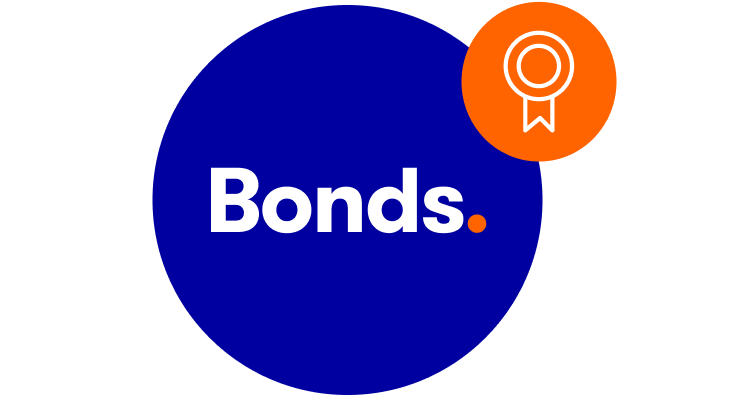Bonds hub
What are high yield bonds

What are high yield bonds
Holding bond funds in your investment portfolio has two key benefits: they provide a regular income, and their value tends to fluctuate less than shares because the amount of income paid is fixed. Therefore, having a mixture of equities and bonds in a portfolio helps reduce risk over the long term.
When it comes to individual bonds – those issued by governments or companies – the creditworthiness of a bond varies. The creditworthiness is the ability of the bond issuer to pay its debts. Some bonds are rated as ‘high quality’, and therefore considered the safest type of bond. These are called investment grade bonds.
At the other end of scale are the riskiest bonds, which are known as high yield or junk bonds. These bonds have higher yields than higher quality bonds, but the trade-off is that the risk of defaulting on their debt obligations is greater.
In terms of portfolio construction, high yield bonds are closely correlated to stocks. This is because high yield bonds are linked to the business results and fundamentals of the company that issue the bond, as well as the general health of the economy.
Therefore, compared to other parts of the fixed income market, high yield bonds have greater potential for capital growth, but could also fall in value suddenly if the economic outlook sours.
Examples of high yield bonds
Credit ratings – Moody’s, Standard & Poor’s and Fitch – assign ratings to bonds. A bit like grading homework, AAA is given for the ‘highest quality’ bonds, while ‘BB’ to ‘D’ are assigned to riskier high yield bonds.
Each credit ratings firm uses their own scoring system – for example Moody’s classes ‘medium grade’ bonds as Baa, whereas Standard & Poor’s and Fitch use BBB.
Ratings change over time depending on whether the risk of the company, or country’s debt increases or decreases.
Examples of companies that have issued high yield bonds include Pizza Express and cruise operator Carnival. Countries with high yield credit ratings include Russia and South Africa.
How to invest in high yield bonds
There are scores of funds managed by professional investors that invest exclusively in high yield bonds. There are three high yield bond fund sectors: global high yield bond, USD High Yield Bond and EUR High Yield Bond. Funds in the latter two sectors have to invest at least 80% of their assets in high yield bonds denominated in those currencies.
Other bond funds also invest in high yield bonds, including those that invest globally, as well as strategic bond funds.
Bond yields and bond prices constantly change. However, high yield bond funds typically yield between 5% and 7% (October 2022). Yields are higher than they have been for several years, due to the bond market sell-off that played out in 2022, as the Bank of England raised interest rates in an attempt to cool down red-hot inflation. A rise in interest rates causes bond prices to fall, and yields to rise.
A fund that invests in high yield in interactive investor’s Super 60 list of fund ideas is Royal London Sterling Extra Yield Bond. Its yield is over 6%. The fund, which sits in the strategic bond sector, seeks to reduce the risk of investing in high yield bonds by favouring bonds secured against specific assets, such as property or cash. It is very diverse, with over 200 holdings.
Investors can also invest in high yield bonds through exchange-traded funds (ETFs). An ETF, listed on the stock exchange, aims to mimic the return of a designated basket of bonds.
Why choose high yield bonds?
Higher yield than regular bonds
As the company or government issuing them has a higher risk of failing to meet their repayments, lower-quality bonds have to offer a higher level of interest to encourage people to buy their bonds. In addition, the immediate income offered by high yield bonds is an attraction.
Diversification to other bonds
High yield tends to behave differently from other areas of the bond market. Therefore, high yield offers something different to a portfolio, so can provide diversification.
Disadvantages of high yield bonds
Greater default risk
There is more chance of a company that issues a high yield bond falling into difficulties and not being able to service their debts. This means there is a greater risk that investors will not be paid back. This is less likely with investment grade bonds. If a bond defaults, investors may not be paid the interest that was promised (the coupon). In addition, their capital (the principal) will also be at risk. In periods of economic uncertainty, default rates increase.
More volatile than other bonds
High yield bonds are linked to the business results and fundamentals of the company that issued the bonds. As a result of this, they behave more like equities.
Generally, high yield bonds are less volatile than shares, but given they provide equity-like returns, such bonds are more volatile than other bond types.
Like equities, bond prices can increase or decrease in reaction to good or bad news. When bond prices increase, yields fall.
Bond fund managers aim to cherry pick the best bonds. Among other factors, fund managers take a view on what the company or government issuing the bond is spending the money on. For example, it could be to refinance existing debt.
What impact do interest rates have on high yield bonds?
Less sensitive to interest rate rises
While not immune to interest rate rises, high yield bonds tend to have short maturities, typically less than 10 years. So, when interest rates rise this part of the bond market is impacted less. In contrast, bonds with long lifespans (of 15 years or more) are more sensitive to interest rate rises, meaning both the price and yield of the bond will fall and rise more than high yield bonds.
High yield bonds have shorter lifespans because they are riskier, so therefore are not able to borrow money for long periods of time.
High yield FAQs
How to buy bonds
You can trade a number of bonds and gilts via your online ii account. For any that aren't available online, you can deal over the phone by calling us on 0345 607 6001.

The value of your investments may go down as well as up. You may not get back all the money that you invest. If you are unsure about the suitability of an investment product or service, you should seek advice from an authorised financial advisor.